
Annual Marshelder
Iva annua
Grow Time
60-90 days
Sunlight
Full Sun
Watering
Every 5-7 days
Toxicity
Non-toxic
How to plant Annual Marshelder: Step-by-Step Guide
Growing Guide
Preparation
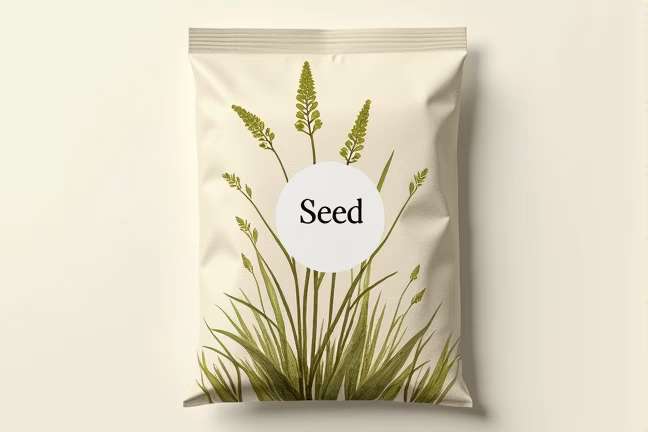
What you'll need:

Annual Marshelder seeds (you can find them at native plant nurseries or online seed retailers)

A patch of soil in your garden, ideally where the ground stays a bit damp

Basic garden tools like a spade and rake

Compost or organic matter to enrich the soil
When to start:
Annual Marshelder is best planted in early spring when the soil is moist and temperatures are starting to warm up. It’s a hardy plant that can tolerate cooler temperatures, but it really thrives as things get warmer.
Choosing a good spot:
This plant loves moisture, so pick an area that doesn’t dry out too quickly—like near a pond, ditch, or any low-lying part of your yard where water tends to gather. If you don't have a naturally wet area, you can still grow it, but you’ll need to water it more often. Make sure it gets plenty of sunlight, as marshelder enjoys full sun but can handle some light shade too.
Planting

- Prepare the soil: Start by loosening the soil with a spade or rake. If your soil is heavy clay or very sandy, mix in some compost to improve drainage and give the plant nutrients.
- Sow the seeds: Scatter the seeds lightly over the surface of the soil. You don’t need to bury them too deep—just press them gently into the soil so they make good contact. They need light to germinate, so covering them with a thick layer of soil isn’t necessary.
- Water well: After sowing, give the area a good watering. The soil should be moist but not soggy. Keep the area consistently damp while you wait for the seeds to sprout.
- Wait for sprouts: Seeds usually germinate within 7-14 days if conditions are right. Once they sprout, thin them out so each plant has about 12-18 inches of space to grow.
Tip: If you’re planting in pots instead of directly in the ground, use a large container with drainage holes and keep the soil consistently moist.
Growing Care
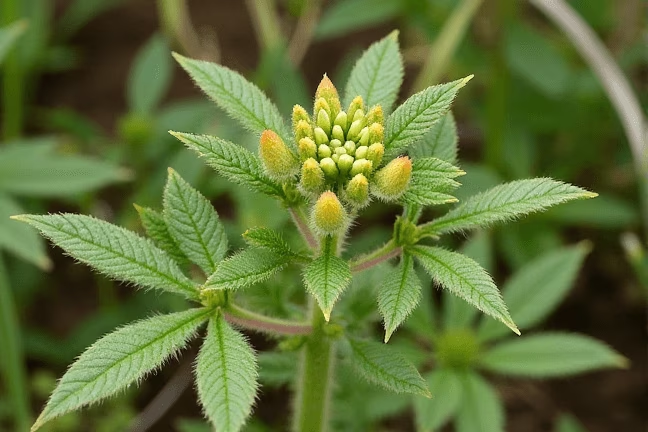
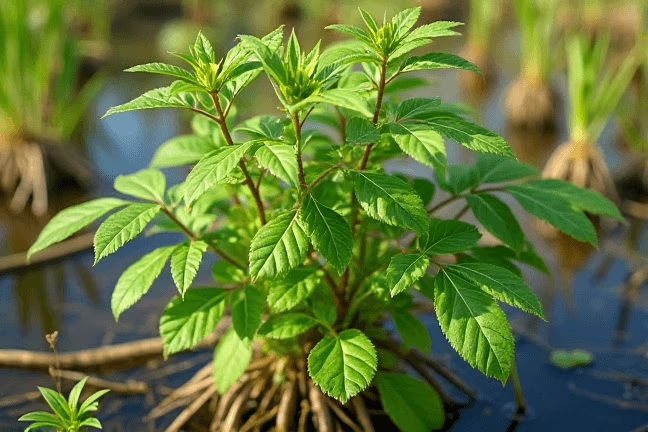

Watering:
- Annual Marshelder likes moist soil, so check it regularly, especially during dry spells. Water deeply whenever the top inch of soil feels dry.
- In particularly hot weather, you may need to water every day or two to prevent the soil from drying out completely.
Sunlight:
- This plant loves sunshine! Aim for at least 6 hours of direct sunlight daily. If your area gets really hot, a little afternoon shade won’t hurt, but full sun is ideal.
Fertilizing:
- You don’t need to fertilize much if your soil is decent and you added compost at planting time. However, if growth seems slow, you can apply a light dose of general-purpose fertilizer once or twice during the growing season.
Weeding:
- Keep weeds away from young plants, as they can compete for nutrients and water. Once the marshelder gets established, it will be better at holding its own against weeds.
Support:
- Annual Marshelder can grow tall (up to 5 feet), so if you notice the stems bending or falling over, consider staking the plant for support. Use a bamboo stick or gardening stake and loosely tie the main stem to it.
Harvesting
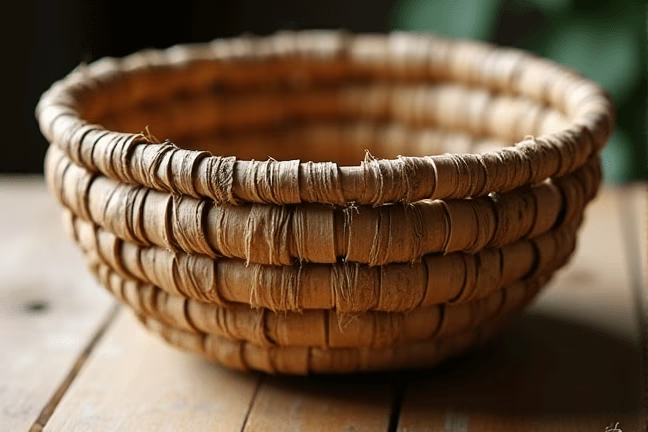
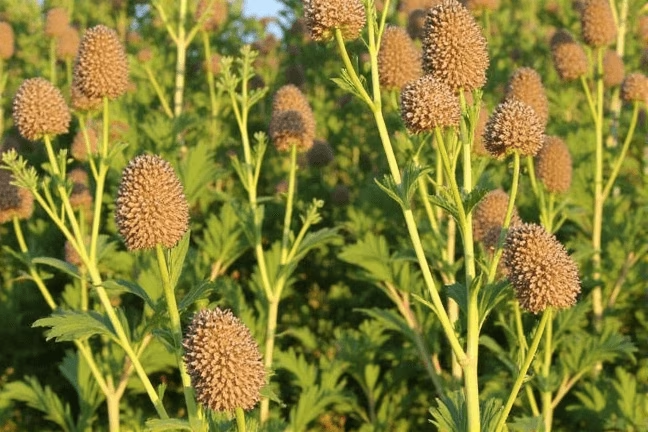

When to harvest seeds:
- Annual Marshelder blooms in late summer to early fall, producing clusters of small greenish flowers. By late fall, these flowers will turn into seeds.
- The seeds are ready to harvest when they’ve turned brown and dry on the plant. This usually happens after the first frost.
How to harvest:
- Simply cut off the seed heads and place them in a paper bag or on a tray. Let them dry indoors for a few more days.
- Once completely dry, you can shake or rub the seed heads to release the seeds. Store the seeds in a cool, dry place if you want to plant them again next year.
Using the plant:
- While Annual Marshelder isn’t commonly grown for food, Native Americans historically used parts of the plant for medicinal purposes or as a seasoning. Be cautious though—this plant is not typically consumed today, and you should avoid eating it unless you’re absolutely sure it’s safe.
Plant Care FAQ
Q: My Annual Marshelder is wilting. What should I do?
A: Wilting could mean the plant isn’t getting enough water. Check the soil—if it feels dry, give it a good soak. If the soil is already wet, ensure it’s not waterlogged, as overly saturated soil can also cause problems.
Q: Is Annual Marshelder invasive?
A: While it spreads easily by seed, it’s generally not considered highly invasive. Still, if you don’t want it to spread too much, remove the seed heads before they drop their seeds.
Q: Can I grow Annual Marshelder in a dry area?
A: It prefers moist soil, but you can grow it in drier areas if you water it frequently. Consider adding mulch around the base to help retain moisture.
Q: Does this plant attract wildlife?
A: Yes! Annual Marshelder is great for attracting birds and beneficial insects. Birds especially love the seeds, and the plant provides habitat for various pollinators.
Q: How do I control pests?
A: This plant is pretty tough, but if you notice aphids or other small pests, you can spray them off with a hose or use an organic insecticidal soap.
Pro Tips
1. Natural pest deterrent
Annual Marshelder attracts beneficial insects like ladybugs, which can help control pests in your garden. Plant it near vegetables to keep unwanted bugs away.2. Companion planting
Since it’s a moisture-loving plant, try planting it alongside other water-loving species like mint or irises for a mini "wetland" effect in your yard.3. Seed-saving tip
Harvest seeds only from healthy plants. This ensures that next year’s crop will be strong and vibrant.4. Support for taller plants
If your marshelder grows tall and starts leaning, use stakes or even tomato cages to support the plant and prevent breakage.5. Mulching advantage
Add a layer of mulch around the base of the plant to lock in moisture and regulate soil temperature—especially helpful in hotter climates.6. Drought preparation
During long dry spells, consider using a drip irrigation system to maintain consistent moisture without overwatering.7. Wildlife-friendly garden
Leave some seed heads on the plant through winter to provide food for birds, making your garden more inviting to local wildlife.